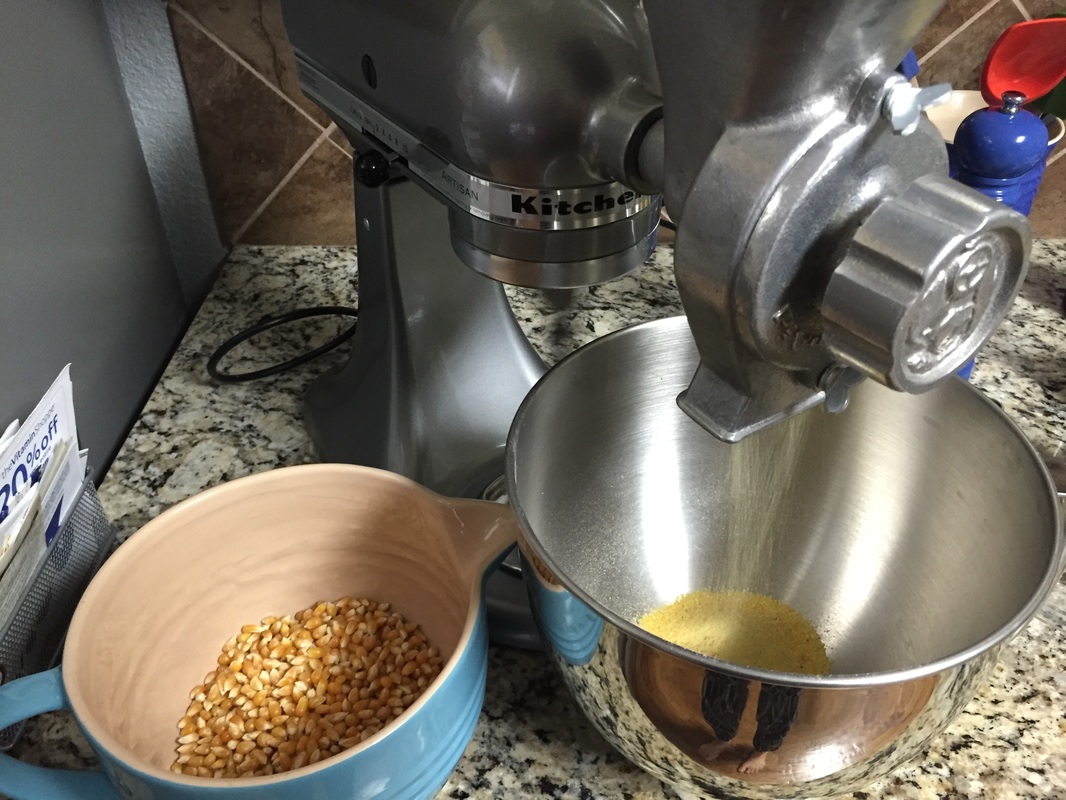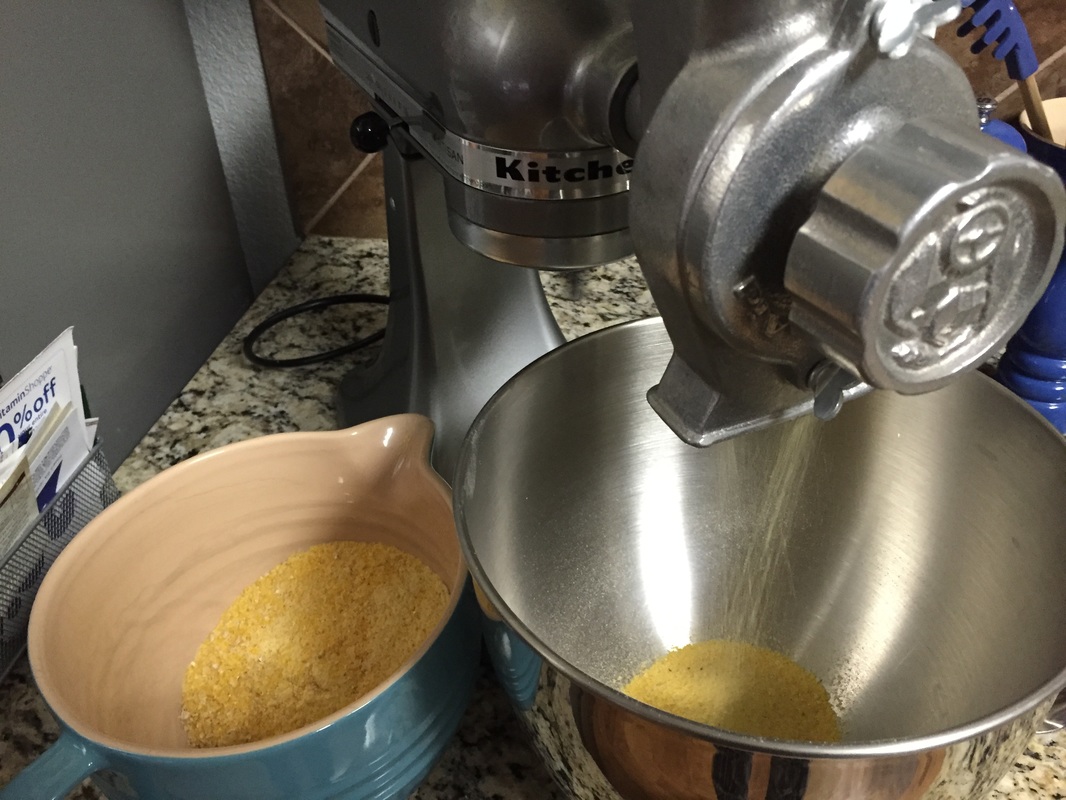|
I've been milling my own flours for a few years now. After the first time I tried it, I never went back! When you take a bite of your freshly baked bread that you made from grain - you'll basically die and go to heaven. See the world's best cornbread recipe; starting with actual corn kernels in my blog post here. White flour has been processed, refined, and striped of it's nutrients. Here's how in plain English: Wheat berries consist of three main layers: (1) Bran, (2) Germ, and (3) Endosperm. Nutrients mainly live in the outer layer, the (1) Bran. In milling white flour, this bran layer is the first to be removed. The grain then goes through a second milling to remove the (2) Germ, which also contains nutrients. The end result is the (3) Endosperm which is then milled and often bleached; which makes it filler with few nutrients. . Milling wheat berries and grains at home allows you to keep all the nutrients in the flour. First, let me recommend the book that helped get me started The Homemade Flour Cookbook. Cooking with fresh unrefined flour can be a little more tricky than opening a bag of all-purpose white flour, so a little preparation can be very helpful. Let me give you the long and short of it and save you a few hours. To get started you need a Grain Mill. There are Hand Mill's - but I can't relate to wanting to add manual labor and more time to the cooking process. Unless you want to multi-task and get a work out in while you're cooking - I recommend you pass. The other options are an electric grain mill, a large coffee grinder, or a high-powered blender. I found an electric grain mill on craigslist before I found a coffee grinder or a high-powered Vitamix Blender (which is the most expensive option), so that's what I use. I started with a Blendtec Kitchen Mill that I bought for a steal- that's actually how I met my essential oil sponsor; I bought her flour mill. I've since moved to the KitchenAid Mixer Grain Attachment. Both these mills work great. The main difference is that you can adjust the fineness of the flour from slightly gritty (like for cornbread) to more fine powder for something like baking pastries. I love them both though, either one is fantastic and I highly recommend either one. If you've got a Vitamix or have been looking for the excuse to buy one - here's your chance. They're fantastic for making flour. I've never been able to stomach the price tag, so I haven't used one myself. But I've stared in awe as the Whole Foods employee gave the in-store demo and I've read how well they work milling grains. Why is it great to mill your own flour? Wheat berries consist of three main layers: bran, germ, and endosperm. Nutrients mainly live in the outer layer, the bran. In milling white flour, this bran layer is the first to be removed. The grain then goes through a second milling to remove the germ, which also contains nutrients. The end result is the endosperm which is then milled and often bleached; which makes it filler with few nutrients. . Milling wheat berries and grains at home allows you to keep all the nutrients in the flour. All-purpose flour found in stores comes from wheat but it has had all its nutrients stripped away and has often been bleached to remove any color of what. Now that you've got your mill, it's time to choose your grain.
The above list is a great selection of grains that are fairly easy to find at either Central Market, Whole Foods, or Azure Standard (online). Take your old bread or pasta recipes and switch out the types of flour. My next post will focus on Gluten Free Grains.
0 Comments
Leave a Reply. |
HomesteadersCooking & home projects galore! My secret inner-designer revealed. Categories
All
Archives
August 2020
|

